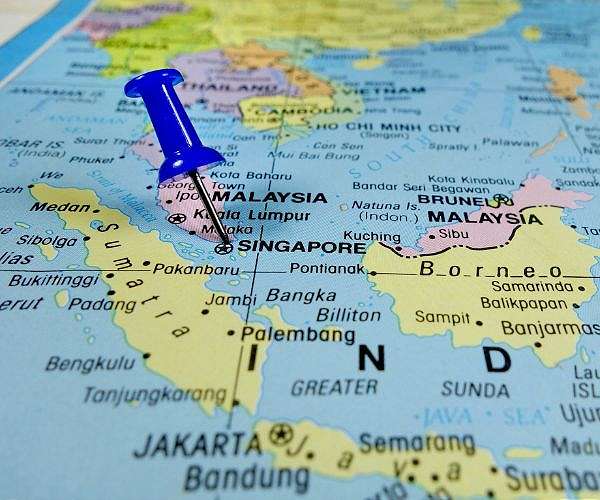Energy-hungry Singapore looks to deserts, forests for renewable energy sources
With massive data centers poised to increase its already excessive energy demand, the tiny city-state of Singapore is looking to the deserts of Australia and the rainforests of Malaysia for clean energy.
This week, Australia announced a massive solar farm that it hopes will eventually supply two gigawatts (GW) of power to Singapore via submarine cable.
Singapore aims to peak carbon emissions by 2030 and net zero emissions by 2050, but is heavily dependent on imported oil and gas.
The city does not have the conditions to produce wind or hydropower, and although it aims to generate two gigawatts from locally installed solar energy by 2030, it does not have room for large solar farms.
In the meantime, demand will only increase, especially from data centers, which already account for seven percent of Singapore’s electricity consumption.
This is expected to increase to 12 percent by 2030.
To meet that demand, Singapore’s Energy Market Authority has already granted conditional approvals for the import of 1 GW from Cambodia, 2 GW from Indonesia and 1.2 GW from Vietnam.
These come from a mix of solar, wind and hydropower, a popular but sometimes controversial energy source in the region, where it has been linked to deforestation and environmental degradation caused by dams.
– ‘Many challenges’ –
Renewable energy imports are expected to account for at least 30 percent of Singapore’s electricity by 2035, according to think tank Ember.
But there are “many challenges,” warned Niels de Boer, chief operating officer at the Nanyang Energy Research Institute, including transmission distances, energy losses and intermittent signals.
The plans call for 4,300 kilometers (2,670 miles) of submarine cable and the project still needs to be signed off by Singapore’s energy regulators, the Indonesian government and Australia’s indigenous communities.
The city-state is already seeing some of these culminate in complications in the transmission of hydropower from Laos via Thailand and Malaysia, said Ong Shu Yi, ESG research analyst at banking group OCBC in Singapore.
There may be “disagreements over how the energy will be transported through different countries, as well as competition between economies for access to renewable energy.”
Singapore currently relies on imported fossil fuels, but these can be purchased on the open market.
“A large-scale bilateral renewable energy import agreement limits Singapore’s strategic flexibility,” said Zhong Sheng, senior research fellow at the National University of Singapore’s Energy Studies Institute.
In the event of disruption, “there may be few alternative renewable sources to compensate.”
That makes it crucial for Singapore to diversify its sources of renewable energy.
“The more one can diversify, the better in terms of energy security,” said Euston Quah, director of the Economic Growth Center at Nanyang Technological University in Singapore.
“Having this additional Australian energy source can only be a good thing.”
Singapore can also limit risks by involving regional bodies such as ASEAN, experts say.
– ‘Global trend’ –
The city is unique in some ways, with an ever-increasing power demand that is five times the regional average.
But the country is far from alone in looking abroad to meet its needs, said Bradford Simmons, senior director for energy, climate and resources at Bower Group Asia.
According to the International Energy Agency, Thailand already imports 12 percent of its electricity, generated from coal and hydropower.
The “mismatch” between countries that can produce renewable energy and those with huge demand “will only accelerate incentives for international electricity trade,” Simmons said.
“Singapore is just part of a broader global trend.”
Demand from Singapore also bodes well for the region’s “vast untapped renewable energy potential,” said Dinita Setyawati, senior Southeast Asia electricity policy analyst at Ember.
It could “stimulate a clean energy transition in the region and boost renewable energy ambitions,” she told AFP.
Officials from Laos and Malaysia’s Sarawak region specifically referenced Singapore’s demand when discussing plans to boost renewable generation.
And the city-state’s appetite and financial resources could help overcome obstacles, Zhong said.
“The urgency and scale of efforts are often influenced by domestic policies, resource endowments, financial capabilities and technological capabilities,” he told AFP.
“Singapore’s leadership in this area could inspire more coordinated regional efforts on the low-carbon energy transition.”


